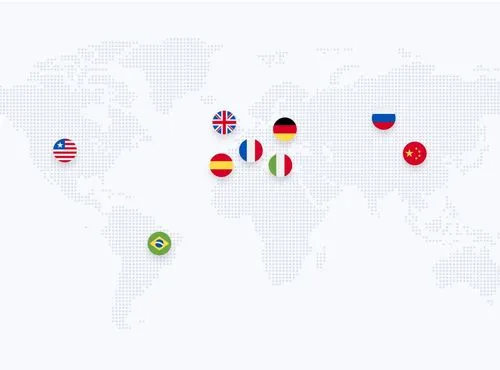Use Cases
September 12, 2025
How to Convince Stakeholders to Use AI Video Translation

Why translating videos is a smart move
Video is the most effective format for communication today – and studies show that language drives engagement.
- +72% longer watch time when videos are in the viewer’s native language (Wyzowl)
- +60% more trust when content is localized (CSA Research)
- +47% higher conversion rates on landing pages with localized video
If you’re operating in international markets or managing distributed teams, translated video content is no longer optional – it’s essential.
Why traditional dubbing is outdated
For years, the standard was: hire voice actors, book a studio, sync everything manually.
But in 2024, that approach comes with significant downsides:
- Slow: weeks of production per language
- Expensive: €200–400 per minute is common
- Cumbersome for multiple speakers or unscripted content
- Inflexible when updates are needed
- Hard to scale for multiple languages or content series
The classic dubbing model no longer fits fast-moving, content-driven companies.
Why many cheap AI tools fail
Some tools promise instant results at low prices – but the output often isn’t usable:
- Unnatural, robotic voices
- No lip sync, making the video feel off
- No option to edit or refine the translation
- No control over brand voice or terminology
- Often non-compliant data handling outside the EU
The result: many versions, no impact. It looks automated – and not in a good way.

Why Dubly is the best of both worlds
Dubly is not just another AI tool. It’s a purpose-built platform for high-quality, scalable video translation – combining the speed of automation with the standards of professional production.
What makes Dubly stand out:
- Natural-sounding voices with accurate lip sync
- Automatic speaker recognition – even in dynamic dialogue
- Custom prompts and glossaries for consistent brand language
- Editable translations after generation
- Optional Native Speaker Review for sensitive or high-stakes content
- Fully GDPR-compliant, with EU-based processing only
(U.S. subprocessors used only under strict EU SCCs)
For companies that want to scale video across languages and markets, Dubly is built to handle the complexity – securely and efficiently.
FAQ: Convincing Stakeholders to Use AI Video Translation
What are the strongest arguments to convince decision-makers?
Cost savings compared to traditional dubbing, faster delivery, scalability, and GDPR-compliant data handling make AI video translation highly attractive.
Why is traditional dubbing no longer appealing for many companies?
Traditional dubbing is slow, expensive, hard to scale, and inflexible for updates — it doesn’t fit modern content strategies.
Why do some low-cost AI tools deliver poor results?
They often generate robotic voices, lack accurate lip sync, provide little brand customization, and fail to comply with European data protection standards.
What makes Dubly especially convincing for stakeholders?
Dubly combines automation with quality: natural voices, precise lip sync, speaker recognition, glossary features, editable translations, and optional native speaker review.
Which KPIs should companies track when adopting AI video translation?
Key KPIs include production time per language, cost per minute, local market engagement, brand consistency, and user trust.
{{cta}}
{{callout}}
Summary: Your company needs a modern solution
Markets move fast. Content demand is growing. Stakeholders want ROI.
Traditional dubbing is too slow. Cheap tools are too weak.
Dubly delivers what modern teams need: quality, speed, and control.
It’s the translation solution for enterprises that take brand communication seriously – and want to scale smartly.
Does the Dubly.AI free trial include the Lipsync feature?
Yes. We believe you need to experience the full technology to understand its value. The free trial includes Generative Lipsync and Voice Cloning, not just simple audio translation.
Is there a difference between a standard "Video translater" and Dubly.AI?
Yes. A standard "Video translater" often only translates text or audio. Dubly.AI is a comprehensive AI solution that adapts the visuals (mouth movements) to the audio, creating a seamless experience.
Can I use Dubly.AI for long-form content?
Yes. While many free tools limit you to 60 seconds, Dubly’s engine is built for scale – from TikTok Shorts to hour-long corporate training modules.
Can I use translate video free tools to internationalize my content?
Yes, absolutely. Using free tools is a great starting point to test new markets without a budget. However, keep in mind that methods like subtitles or basic video translator apps usually only transfer information, not emotion. To truly internationalize your brand's personality and retain viewers, you will eventually need lipsync technology to ensure the audience feels connected to you, not just the text.
Does a free ai video translator work for all types of videos?
It works well for content where the speaker is not visible, such as screen recordings or faceless tutorials. However, for any video featuring a person speaking on camera, a standard tool often falls short. Because it lacks lipsync, the visual mismatch distracts the viewer. For content meant to build trust or emotion, you need a solution that adapts both the voice and the visuals.
Is there a free version of Dubly.AI?
You can translate your first video for free so you can validate the quality with your own files. We believe in letting you prove the value first.
Does this work for any language?
Our AI supports over 30 languages, covering the majority of global markets (English, Spanish, German, French, Japanese, Mandarin, etc.). The Lip Sync works universally across these languages.
How accurate is the translation?
AI translation is very good (95%+), but for critical content, context matters. That is why we offer Native Speaker Control (NSC) as an add-on, where humans review the AI's work. This combines the speed of software with the precision of a native speaker.
Can I automate this process?
Yes. For agencies, media houses, or companies with high volume, we offer an API. This allows you to integrate video translation directly into your content management workflow, removing manual upload steps entirely.
Über den Autor

Newest articles

Use Cases
How to Translate Video Free: 3 Ways to multiply your reach
Looking for an AI video translator? We answer how to translate video free using 3 methods: Subtitles, Basic TTS, and Professional Lipsync.

Simon Pieren
December 8, 2025

Use Cases
Translate Video Free: A Guide to AI Translation, Lip Sync & Voice Cloning
Looking to "translate video free"? Learn the technical differences between standard dubbing and generative AI Lip Sync, and how to test professional quality risk-free.

Simon Pieren
November 28, 2025

Use Cases
How AI Video Translation Connects Global Teams
How AI video translation breaks down language barriers in enterprises - secure, empathetic, and scalable.

Simon Pieren
November 24, 2025
